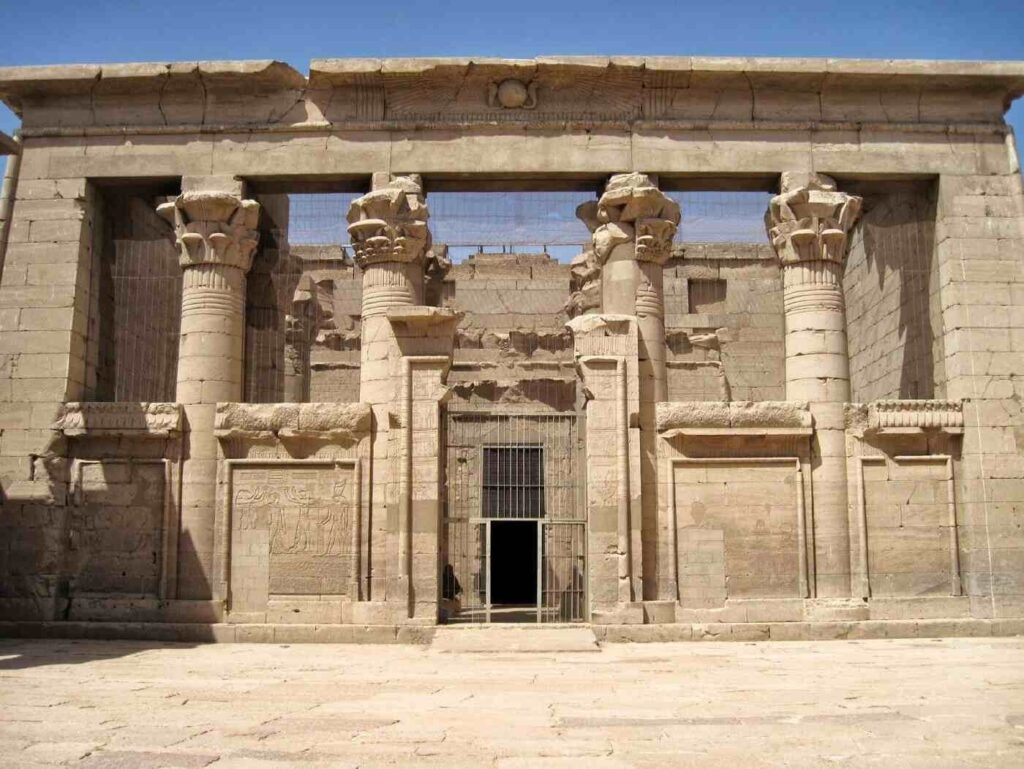1.929.351.3752
[email protected]
At House of Royals, we seek to use the power of resurrecting ancient techniques to heal and diversify the soul. Our team of passionate Egyptologists, tour guides, dedicated researchers, and local tribal cultural torch holders have carefully curated immersive experiences centered on Egypt’s most sacred temples and historic sites.
Discover the awe-inspiring beauty of temple walks and guided tours, where you’ll explore these ancient spaces’ profound spiritual and cultural significance. Each step through these timeless monuments offers a unique opportunity for educational enrichment, personal reflection, and connection with the heritage of the ancients.
Below are descriptions and pictures of some of the Ancient Temple visits we take during our House of Royals retreats.
Please note that not all packages include every temple visit. Use our inquiry form to learn more about the offerings in each package.
The Karnak Temple Complex, known as Ipet-Isut or “The Most Selected of Places,” is a monumental site in Luxor dedicated primarily to the Theban Triad—Amun, Mut, and Khonsu—and other deities. Spanning 247 acres, its construction began in the Middle Kingdom (2000 BC) and continued through the Greco-Roman period (30 AD).
Renowned for its grandeur, Karnak features colossal pylons, courtyards, and the iconic Hypostyle Hall with 134 intricately carved columns. Its most striking feature, the Avenue of Sphinxes, stretches nearly two miles, linking Karnak to the Luxor Temple and serving as a ceremonial path for religious festivals.
A testament to ancient Egypt’s spiritual and architectural mastery, Karnak remains one of the most awe-inspiring and historically significant sites in the world.
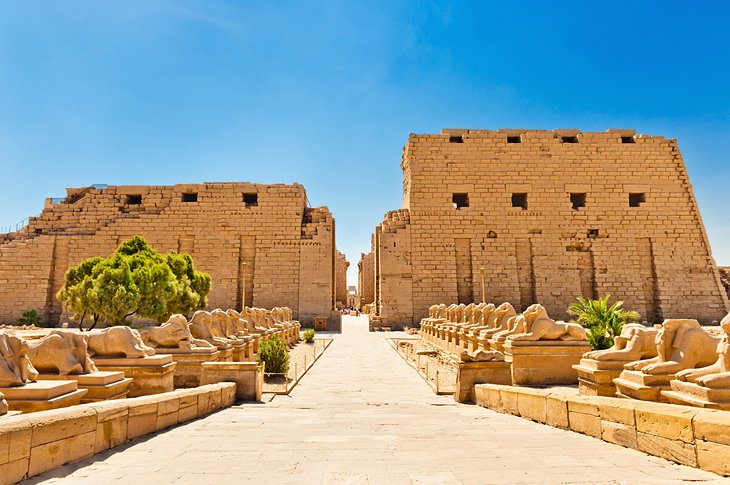
The Luxor Temple, often referred to as the “Southern Sanctuary,” is a magnificent testament to ancient Egyptian grandeur and devotion. Constructed around 1400 BC during the reign of Amenhotep III and later expanded by other pharaohs, including Ramses II, the temple was dedicated to the Theban Triad—Amun, Mut, and Khonsu. Unlike other temples primarily built for the worship of gods, the Luxor Temple was unique in its purpose: it served as a center for rituals associated with the rejuvenation of kingship.
One of its most significant events was the Opet Festival, an annual celebration during which statues of the gods were paraded along the Avenue of Sphinxes from Karnak to Luxor Temple. This sacred journey symbolized the renewal of the pharaoh’s divine authority and the harmony between the gods, the king, and the people.
Today, the Luxor Temple remains a symbol of Egypt’s cultural and spiritual heritage. Recognized as a UNESCO World Heritage Site in 1979, it stands as an enduring monument to the architectural brilliance and ceremonial traditions of the New Kingdom. Its beautifully preserved columns, statues, and inscriptions continue to captivate visitors from around the world, offering a glimpse into the grandeur of ancient Egyptian civilization.
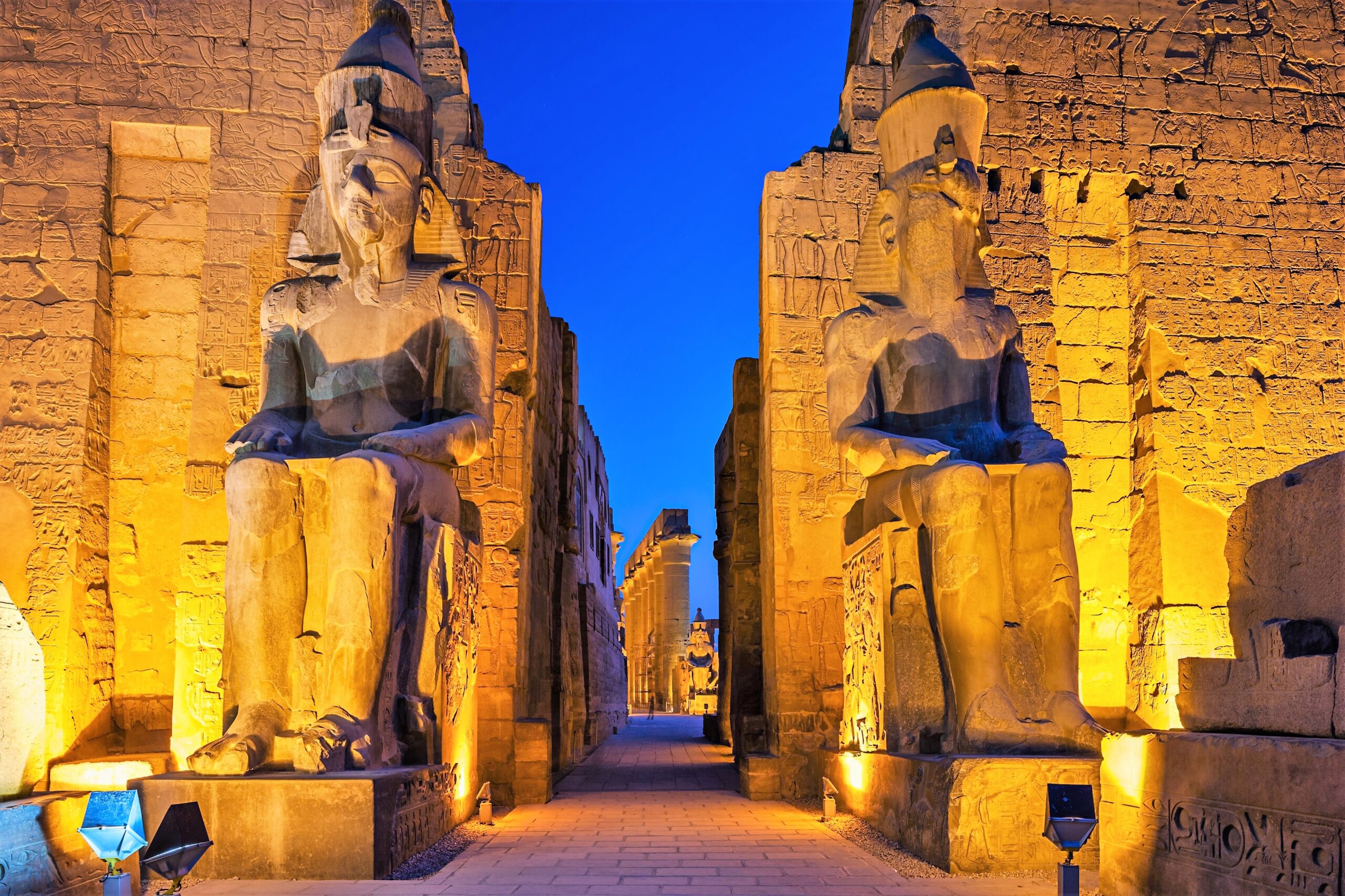
The Valley of the Kings, often referred to as the “Valley of the Gates of the Kings,” is a mesmerizing time vault that unveils the splendor and artistry of ancient Egypt’s New Kingdom (1570–1050 BC). Nestled on the west bank of the Nile in Luxor, this UNESCO World Heritage site served as the burial ground for Egypt’s most illustrious pharaohs and nobles.
The Valley of the Queens, located on the West Bank of Luxor near the Valley of the Kings, served as the burial site for the wives and children of the royal family in ancient Thebes. This archaeological site features around 70 rock-cut tombs with long corridors leading to main burial chambers and side chambers. While smaller and less majestic than the Valley of the Kings, some tombs share artisanship with their royal counterparts. The most breathtaking tomb belongs to Queen Nefertari, wife of Ramesses II, known for its unique design and captivating paintings, discovered by Ernesto Schiaparelli in the 19th century. Other notable tombs include those of Queen Tyti, Prince Amen, and Khaem-West.
Each tomb from both the Valley of the Kings and Queens are masterpieces, adorned with intricate hieroglyphics and vibrant wall paintings that depict scenes from the Book of the Dead and other sacred texts, guiding the deceased through the afterlife. The elaborate burial chambers also reflect the Egyptians’ spiritual beliefs and devotion to ensuring a prosperous eternity for their rulers.
Despite centuries of exploration and excavation, these valleys continues to captivate archaeologists and travelers alike, offering an unparalleled glimpse into the splendor and mysteries of ancient Egyptian civilization.
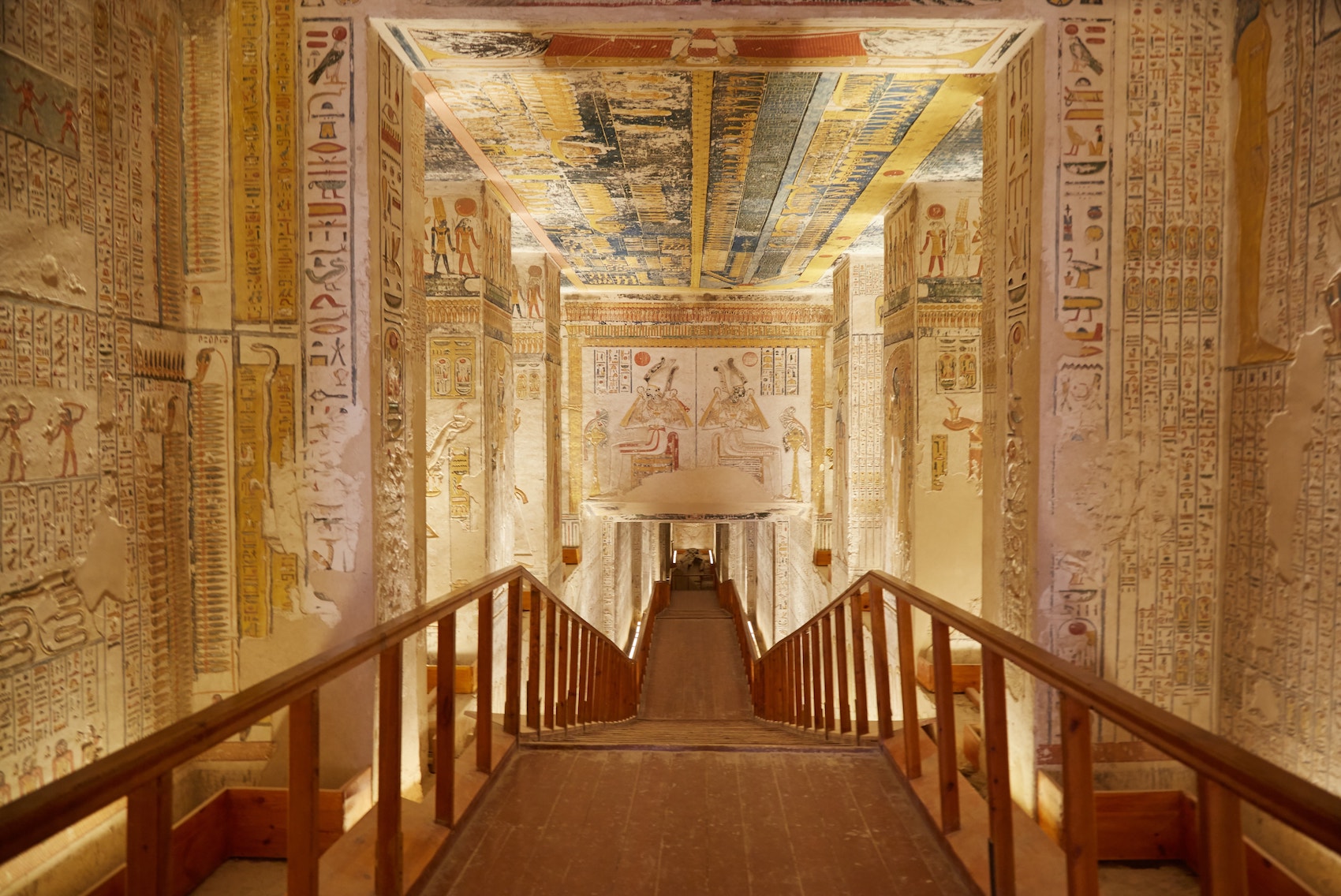
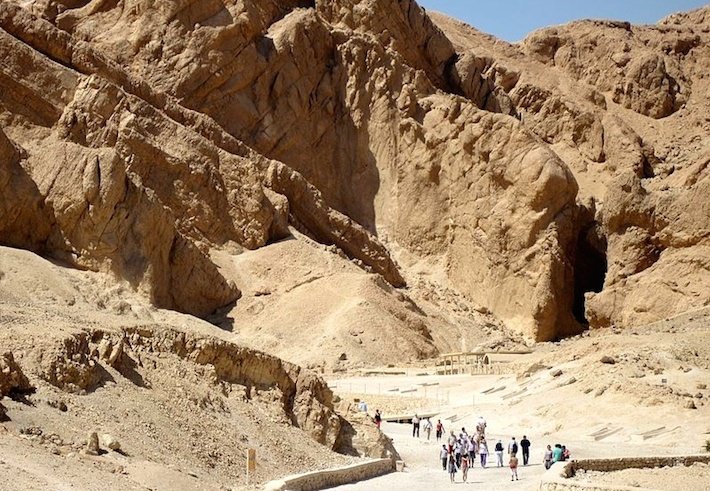
The Holy of Holies Temple of Queen Hatshepsut, built between 1507–1458 BC, stands as a remarkable tribute to one of Egypt’s most successful and pioneering pharaohs. Dedicated to the sun god Amun and Hatshepsut’s enduring legacy, this grand structure reflects her power, devotion, and architectural ingenuity. Located in Deir el-Bahari on the west bank of the Nile, the temple seamlessly integrates with the surrounding cliffs, creating a breathtaking harmony of natural and man-made beauty.
Renowned as a masterpiece of classical Egyptian architecture, the temple features three massive terraces connected by elegant ramps. These terraces were adorned with colonnades, statues, and intricate reliefs depicting Hatshepsut’s divine birth, her trading expeditions to Punt, and her close association with Amun. The terraces also hosted the beautiful Festival of the Valley, a sacred celebration of renewal and connection between the living and the dead.
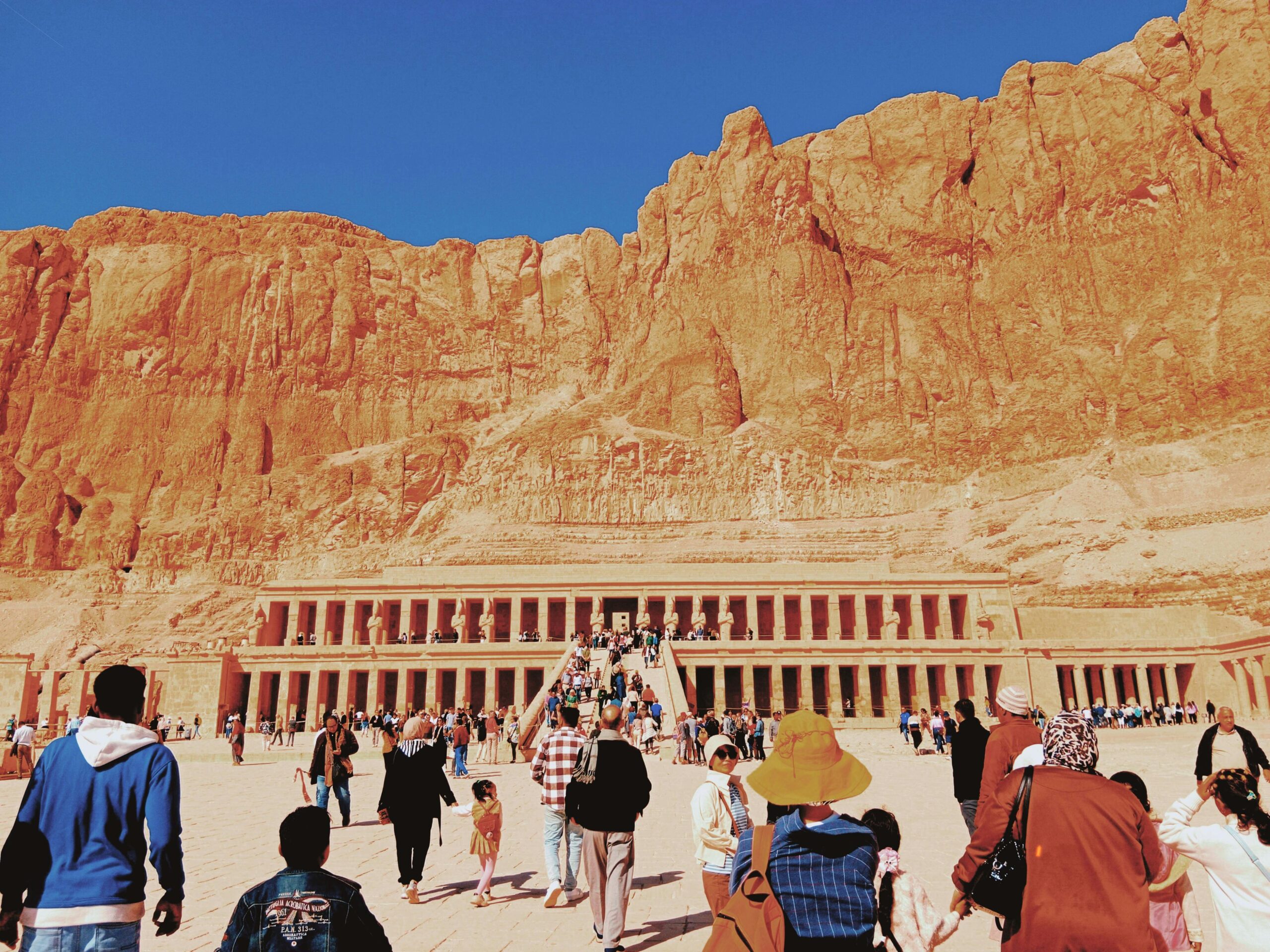
While not as frequented as other sites on the West Bank, Medinet Habu is often regarded by visitors as one of Luxor’s most impressive sights. This remarkably preserved temple complex, commissioned by Ramesses III, is based on the design of the Ramesseum but surpasses it in grandeur, with its towering pylon and many intact walls, showcasing vivid original paintings. Ramesses III (1184–1153 BC), the last of Egypt’s great pharaohs, oversaw the construction of Medinet Habu, his largest building project. During his reign, the temple served as a fortified city, later becoming a refuge for Coptic Christians. Visitors are greeted by a massive stone gate, a Ptolemaic addition, which leads to the main temple’s towering pylon, adorned with well-preserved reliefs depicting Ramesses III’s victories over the Sea Peoples and Libyans. Beyond the pylon, the complex opens into courtyards with detailed carvings and vibrant columns, culminating in a final hypostyle hall.
The Temple of Hathor, located in Dendera near the Temple of Isis, is one of the most exquisitely preserved monuments of ancient Egypt, dedicated to Hathor, the goddess of love, joy, music, fertility, and women. This temple stands as a profound celebration of the divine feminine, with its grand columns adorned with intricate carvings, including depictions of Bes, the dwarf god symbolizing humor, protection, and childbirth.
The temple served as a center for rituals and festivals honoring Hathor, such as the Feast of the Beautiful Reunion, which celebrated her union with Horus. Its beautifully detailed astronomical ceiling showcases the ancient Egyptians’ deep connection to the cosmos and their spiritual understanding of life.
For women, the Temple of Hathor remains a symbol of empowerment, nurturing energy, and healing, offering a timeless tribute to the goddess’s enduring legacy in shaping the roles of femininity, joy, and creativity in ancient society.
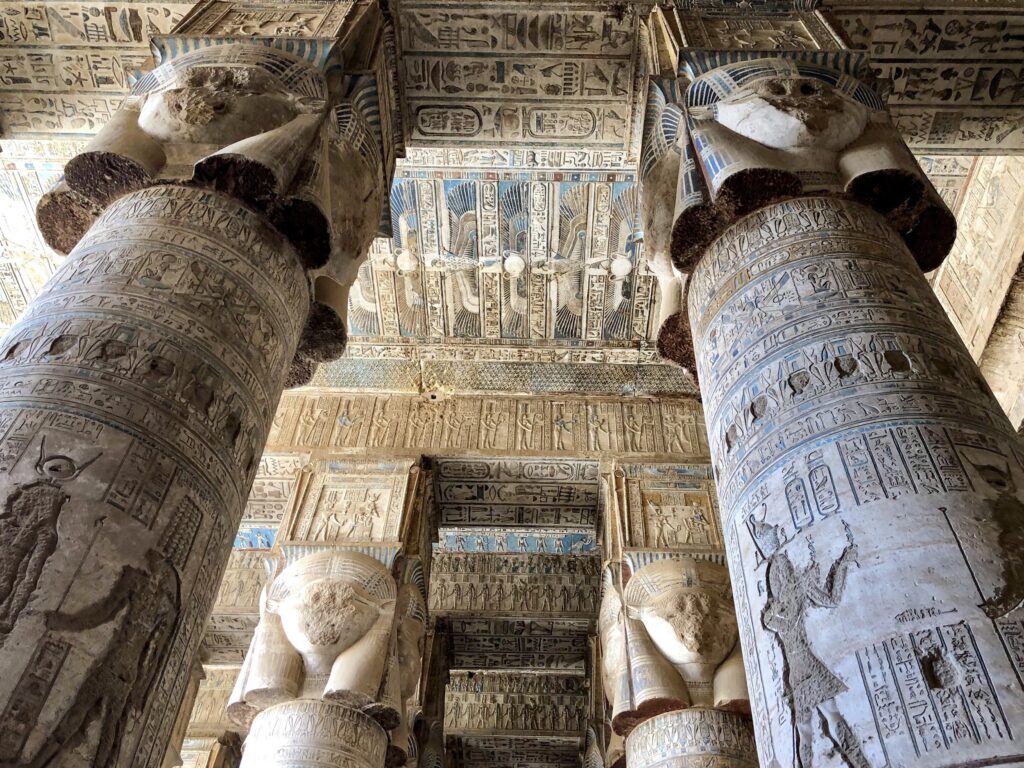
The Temple of Edfu, dedicated to Horus, the falcon god, is the largest and best-preserved temple devoted to this deity in all of Egypt. Built during the Ptolemaic period (237–57 BC), it stands as a monumental testament to the architectural and religious achievements of the era. Located 64 km (39 miles) north of Kom Ombo and 124 km (77 miles) south of Luxor, the temple is renowned for its massive pylons, intricate carvings, and well-preserved reliefs depicting the triumph of Horus over Set, his uncle and rival.
Edfu Temple served not only as a place of worship but also as a center for important religious ceremonies, including the annual Festival of the Triumph of Horus. Its grandeur and meticulous design offer a glimpse into the spiritual life and artistic mastery of the Ptolemaic Kingdom, making it a must-visit site for those exploring Egypt’s ancient heritage.
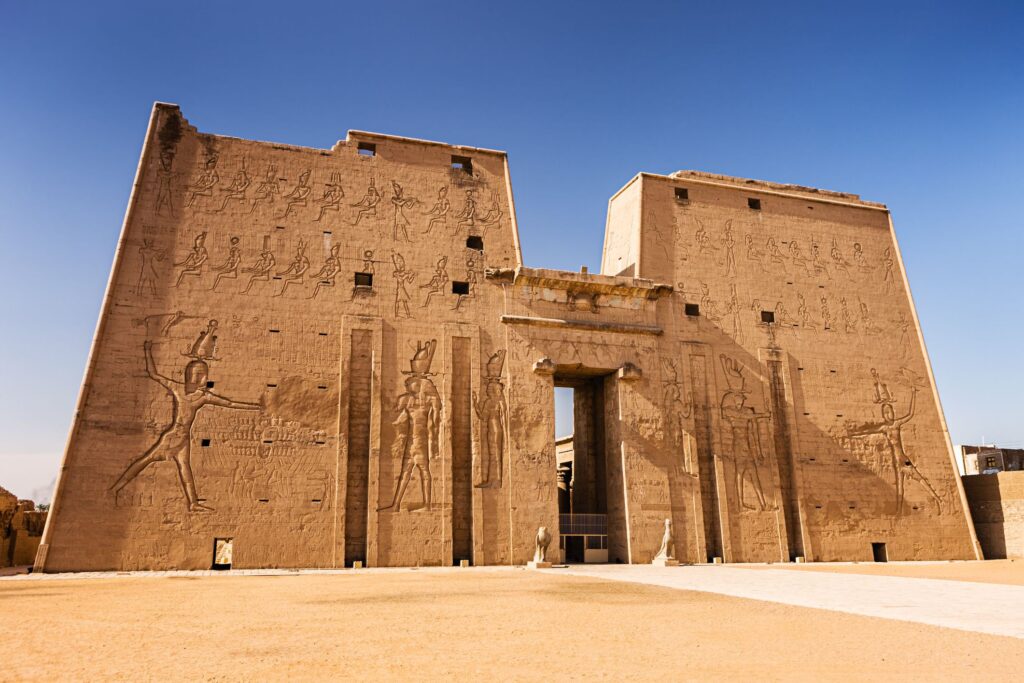
The temple of Mandulis in Ancient Egypt was built at Bab al Kalabsha, south of Aswan on the west bank of the Nile. It was dedicated to the Lower Nubian Sun God. This is also a specimen from the Ptolemaic period. The temple is a spectacular eight-column hall. Beautiful inscriptions and motifs on the wall are suggestive of the life of the kings and their encounters with Gods and Goddesses. Panoramic view of the Lake Nasser is breathtaking and there are strategic places for photography. This temple in Aswan had a beautiful gateway, but the Egyptian government gifted it to the Germans who helped them to shift the temple structure in 1977. You can find the gate at the Berlin Museum. The ancient temple was built out of cutting the rock by Ramses II. It means the house of holy men. This temple too was relocated when the dam was built in Aswan. Now it is close to the high grounds near the Temple of Kalabsha.
